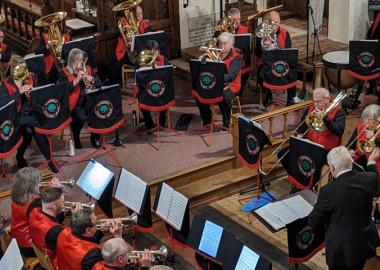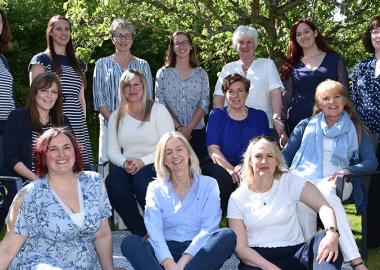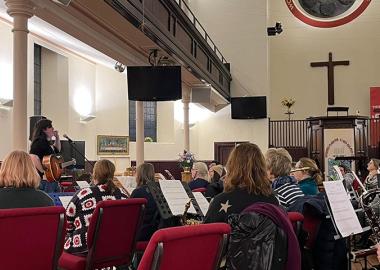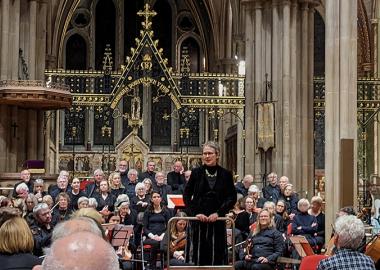It always surprises me how quickly a piece can become external to its composer. What had before been an ongoing process, an open book, becomes the fixed and seemingly immobile score. The thoughts and strategies behind the piece slowly melt away, leaving only the musical surface: the petrified result of a lengthy moment of creativity.
In fact, finding out about the piece in performance is almost another learning process, quite distinct from the period of its composition. Thankfully, this can in fact be quite helpful when trying to describe and rehearse the piece, as your mind is no longer clouded by the ‘what ifs’ but is focused instead on the music in hand.
This music was in the capable hands of Thame Chamber Choir as they rehearsed The Hoard ahead of their concert in a few weeks’ time. The piece, inspired by a medieval hoard found in Thame during WWII, takes the idea of history and memory as its main theme. This is the reason for the choice of fragmentary historic texts in old and middle English, and a certain stylistic flexibility in attempting to make new music sound old, and old music sound new.
The extremely high skill level of the choir led me to write quite a number of challenging moments. These, while not easy to negotiate, have thankfully been met with a great attitude from the group, who greet difficulties with application, enthusiasm and, according to some, even enjoyment!
It is nevertheless important that difficult music be difficult for a reason, and it is in this that a somewhat more distant attitude to the piece can be of help. Not explaining the choice of notes or rhythms but the general effect – where the music in a passage really lies – is to my mind the most important contribution a composer can make to rehearsals – other than a timely submission of the score!
After that it is up to the performers and I’m looking forward immensely to these very talented musicians giving this piece its premiere.
The Hoard will be premiered by Thame Chamber Choir with conductor Duncan Aspden on Saturday 15th October, St Mary’s, Thame.










